I like the lighting of the figures and the overall compositions of all his photographs; I feel that those are his strongest qualities to his work. He also brings out the true beauty of the model in his photographs. These are all things I would like to improve on in my own work.
Tuesday, January 27, 2015
Pierre Choinière
Pierre Chionière is a world renowned advertisement and fashion photographer. He started his career out in Montreal, then moved to Paris in 1988, when he became known for his fashion advertising photography. He currently lives in Quebec and travels the world for his photojournalistic work.
Lots of Cake! is a series by Laura Curran about family structure and how celebrations can be used as a mode of escapism. I like this series because it is a narrative about a somewhat normal event, but it brings out the oddities that inevitably occur in a family. While it's about one collective experience, it is also about each individual's contribution and how that shapes the entire experience. Laura's work amplifies the way it feels to be there, at a party, with those people that you've known your entire life while focusing on the host--her mother.
In her statement she mentions Tzvetan Todorov's narrative theory in which he suggests that the inevitable cycle of the mundane is interrupted by snippets of beauty, lifting your gaze from the endeavor to the finale and the inherent splendor within. She states that these family parties are a reoccurring cycle, where the decorations and props are put away only to await the next event. Some people, like her mother, turn holidays into extravagant events in which she plays a role in creating memorable moments. This series started out as documentation but turned into a "revelation" about her mother's character and imagination.
Mona Breede
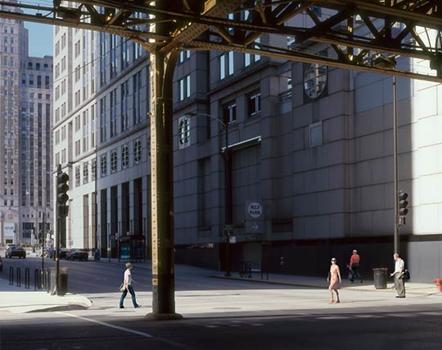
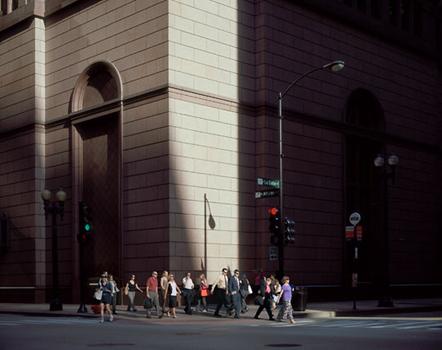
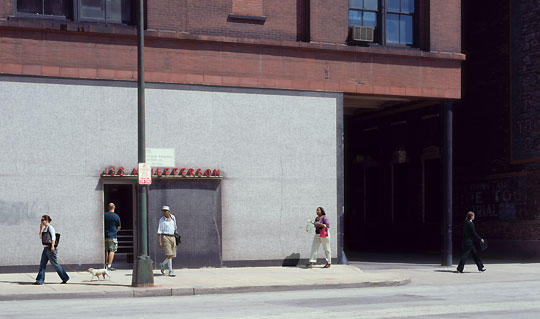
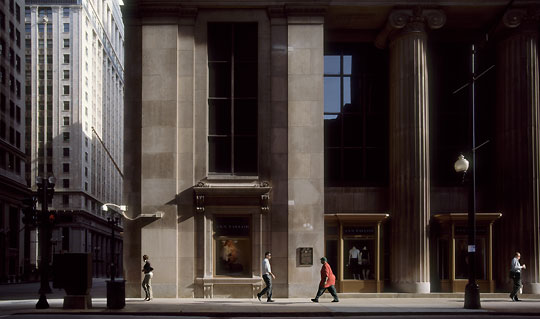
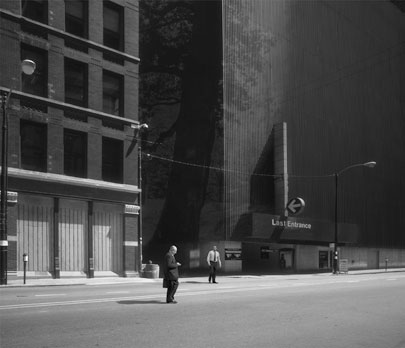
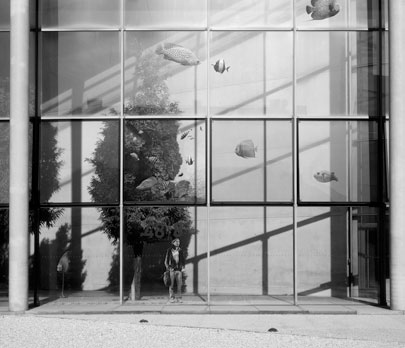
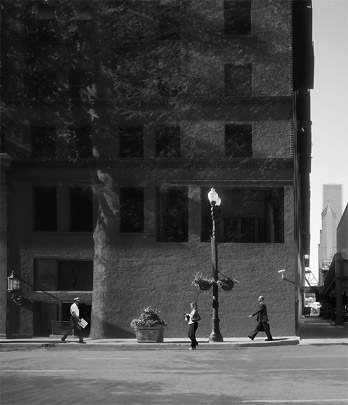
http://www.monabreede.de/choreographien.html
Mona Breede is a German photographer that turns reality into something fictional. Her photographs are reminiscent of film stills, and Breede actually constructs these weird scenes with people she photographed elsewhere. The collection of series she presents on her website is titled, "Choreographien" or choreographies in English.
This work relates to my own because of my new approach to my proposal. I would like to steer my photography down a narrative path, not unlike Breede's style, but I would prefer to follow one or multiple characters in order to follow a loose storyline. Breede's work also subtly approaches social issues, including: depression, anxiety, and isolation.
Lou Bopp
Lou Bopp's website says he is a "commercial location photographer." The website's "About" section describes him as a "big shot NYC photographer with Midwestern roots with a resume every kid (...) in America would die for."
I'd say that's probably accurate. He's worked for almost every big-name client you can think of off the top of your head. In his series "Blues Musicians," however, Bopp got personal and intimate with photography and music. He traveled the Blues Highway (Route 61 South from Memphis) to track down and document the last living blues musicians in Mississippi who shaped the genre in America.
According to an article about the series on Feature Shoot, Bopp also documented the remaining culture of the blues in Mississippi in addition to shooting portraits of the musicians. He photographed the roadhouses and bars that supported the music, using only natural light and no assistants.
I was interested in this series because music photography is what initially inspired me to learn photography years ago. I really enjoy Bopp's approach because he photographed a decent amount of musicians, and made use of some very interesting locations to add to the story each photo is trying to tell about those musicians. He seamlessly combines locations, various people, textures, and color palettes to effectively convey a certain mood in each image, which I think are all important parts of documentary portraiture.
I'd say that's probably accurate. He's worked for almost every big-name client you can think of off the top of your head. In his series "Blues Musicians," however, Bopp got personal and intimate with photography and music. He traveled the Blues Highway (Route 61 South from Memphis) to track down and document the last living blues musicians in Mississippi who shaped the genre in America.
According to an article about the series on Feature Shoot, Bopp also documented the remaining culture of the blues in Mississippi in addition to shooting portraits of the musicians. He photographed the roadhouses and bars that supported the music, using only natural light and no assistants.
I was interested in this series because music photography is what initially inspired me to learn photography years ago. I really enjoy Bopp's approach because he photographed a decent amount of musicians, and made use of some very interesting locations to add to the story each photo is trying to tell about those musicians. He seamlessly combines locations, various people, textures, and color palettes to effectively convey a certain mood in each image, which I think are all important parts of documentary portraiture.
Monday, January 26, 2015
Un Petit Monde: Kurt Moses




Un Petit Monde is the name of the series Kurt Moses has created where he arranges tiny people in a larger-than-life world. Moses does not use tilt-shit photography or Photoshop, rather, he sets up his everyday scenes in the real world using natural light. The photographer, loves telling stories through his works, which he wants others to help him actively create. “My goal is simple," he says, "initiate a storyline and capture an evocative photo that allows the viewer to draw their own conclusions about the scenes they are observing.”
http://www.kurtco.com/
Leo Caillard - Art Games
Leo Caillard is a 30 year old French photographer. He graduated from Gobelins school of Visual Communication in 2008. After graduating he came to the U.S. and spent a year there before going back home and starting his series "Art Games".
I choose this series because I like how he combined art with technology. The way that he combined the art work with technology make me think of this like a virtual tour through the Louvre. I also like how he shows the way that people interact with the art work now.
http://www.leocaillard.com/
Michael Kenna is one of the most popular and influential landscape photographers of the last 50 years. His unique minimalist imagery has inspired many, and earned him a huge and loyal following. Fans of Kenna's photography will be delighted to learn of his 1st major retrospective exhibition in London.
Michael Kenna looks for interesting compositions and arrangements within the natural landscape. He is drawn to certain times of day and night, preferring to photograph in the mist, rain and snow clear blue sky and sunshine do not inspire him. He only photographs his work in black and white, as he believes that,
"Black and white is immediately more mysterious because we see in colour all the time. It is quieter than color."
I chose these photos because of the specific look that the
artist has to the landscape and urban areas.
Some reduction and deletion has occurred in these photos. Deletion of
color and all the elements of daily life. This can give a specific feature to these
places to make them different and separate form normal every day seen places.
The artist made his own landscape and
his own city. There is a mysterious feeling in these photos that can be the
result of the deletion of color, and as the artist said by these reductions the photos become quiet.
https://www.blogger.com/blogger.g?blogID=8143376504192972200#editor/target=post;postID=4343365527298380259
Thursday, January 22, 2015
Corine Vermuelen is a Dutch Artist working in Detroit, and had set up a pop up portrait studio and documented people who came in from off the street. I hope to be able to set up multiple pop up studio's across the Metro Detroit area to be able to document many different people from around the area in hopes to capture the different sub cultures of fashion and popular culture influences.
Jaejin Hwang
I found Hwang's series Asleep interesting. The series tries to show the ambiguous distinction between a peaceful death and falling asleep with the approach of random and natural things that occur in our daily lives. Some of the images are move obvious when it comes to determining if it is asleep or had a "peaceful death," but some left you wondering which one it could be. The tree images were the most powerful in that aspect in my opinion because of the eerie feeling they give off.
Being able to show a difference between falling asleep and a peaceful death in subtle ways is inspiring for me, based on my project on daydreams. I wanted to combine both reality with the daydream. I had a more straight forward approach to the concept where Hwang had a subtle approach.
Being able to show a difference between falling asleep and a peaceful death in subtle ways is inspiring for me, based on my project on daydreams. I wanted to combine both reality with the daydream. I had a more straight forward approach to the concept where Hwang had a subtle approach.
Wednesday, January 21, 2015
Whilst I am Drawing Breath




Whilst I am Drawing Breath, Amy Elkins
Amy is a photographer born in 1979 living in the Los Angles area. She earned her BFA from the School of Visual Arts in NYC. Her most recent work deals a lot with male gender identity through topics of athleticism and dance. She won the Aperture prize with her long-tern project Black is the Day, Black is the Night, which explores masculinity and vulnerability of men serving life and death row sentences at prisons in the U.S.
Though there was no artist statement about the series I chose to write about, I was able to conjure up my own thoughts on the work. I think it relates to the type of work I hope to make in that is about the personal experience, identity, transitory states and vulnerability. The title "Whilst I am Drawing Breath" suggests the importance of the current moment; her life the way she sees it at this moment in time and everything that comes with being alive and breathing. In these images, I think it is obvious that she is not really optimistic. She has constant thoughts of wanting to be somewhere else, or maybe even be someone else. Even so, she chooses to make images of her life the way it is and about her feelings the way they are. The rest of the series is very dream-like and gives me the feeling of sitting around, staring out a window into nothingness.

Monday, January 19, 2015
Carrie M. Becker
Carrie M. Becker is a visual artist who creates rooms that appear abandoned and cold. She will destroy a room to make it look years older. Becker uses natural lighting and uses the view from her apartment as a back ground. She uses various methods of creating realistic household objects.
She creates images that speak to loneliness and hoarding. She makes all her own pieces and works to capture a feeling rather than a photograph.
Saturday, January 17, 2015
Jason Evans
This project is called: Street. "Some times you visit a place and it looks too much like you expected it to... like feeling of nostalgia for something you've never known" mentioned by the artist.
In these photos we can simultaneously see different scenes of a city. Some details that might be ignored by a regular pedestrian in a crowded city, are significant part of the photos. By looking at the photos you can feel the atmosphere of the city and even can imagine all the sounds that can be heard.
http://www.seesawmagazine.com/jasonevanspages/jasonevans01.html
Tuesday, January 13, 2015
“I am tired of photography.”
– Asger Carlsen
"Hester"
His work, "Hester" (shown above) is a combination of sculpture and photography. Carlsen claims that his skill in photography doesn't really play any part in his work anymore. He prefers the manipulation/sculpting part, so that is that main focus of his art.
I chose this series of photographs because of his quote, "I am tired of photography." After I read this, I immediately decided to write about it, to sort of work through my own similar feelings. I began to feel drawn toward photography as an 8th grader, unfortunately for the wrong reasons (myspace default picz), but nevertheless, I ended up continuing this path, and eventually became interested in fine art photography as I moved into the college level courses. However, as I took my foundations courses, I've started to appreciate the intimacy of art done with your hands. That's what drew me to Carlsen's work. He combines the intimacy of painting or drawing, with the aesthetic of a photograph, and I hope to use this in my future work.
As for interpretation, Carlsen himself said that there's not much behind his photographs. They're just visual. In my opinion, that's not how photography should be, but I really respect his manipulation skills, so I still enjoy it. The interviewer from Vice mentioned that the style these are photographed in is very similar to a photograph of an actual sculpture or piece of art, and I definitely noticed when I first saw the series. Overall, absolutely a series that gets me thinking about my own art, and for that, I'm thankful.
Subscribe to:
Comments (Atom)


































